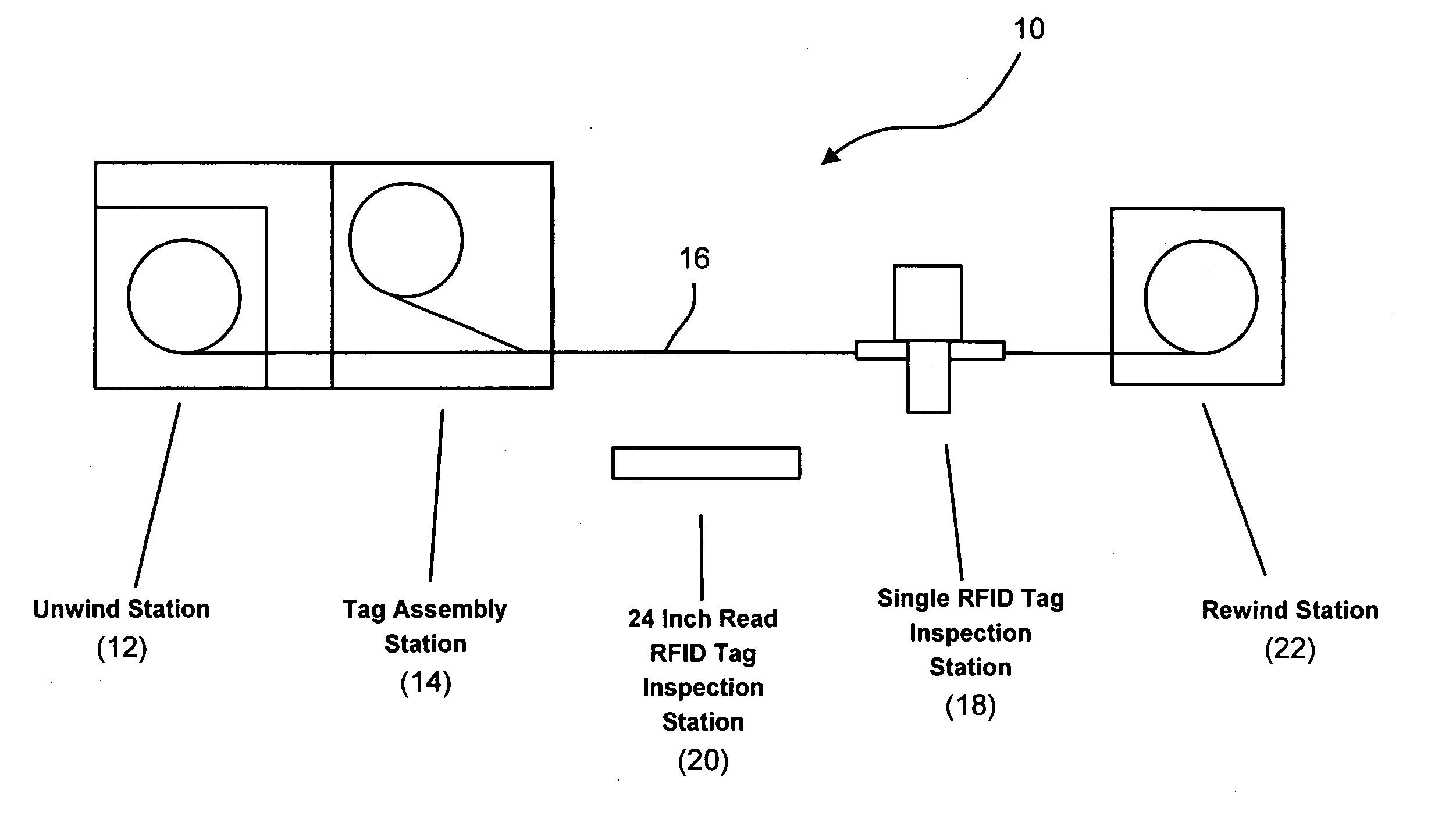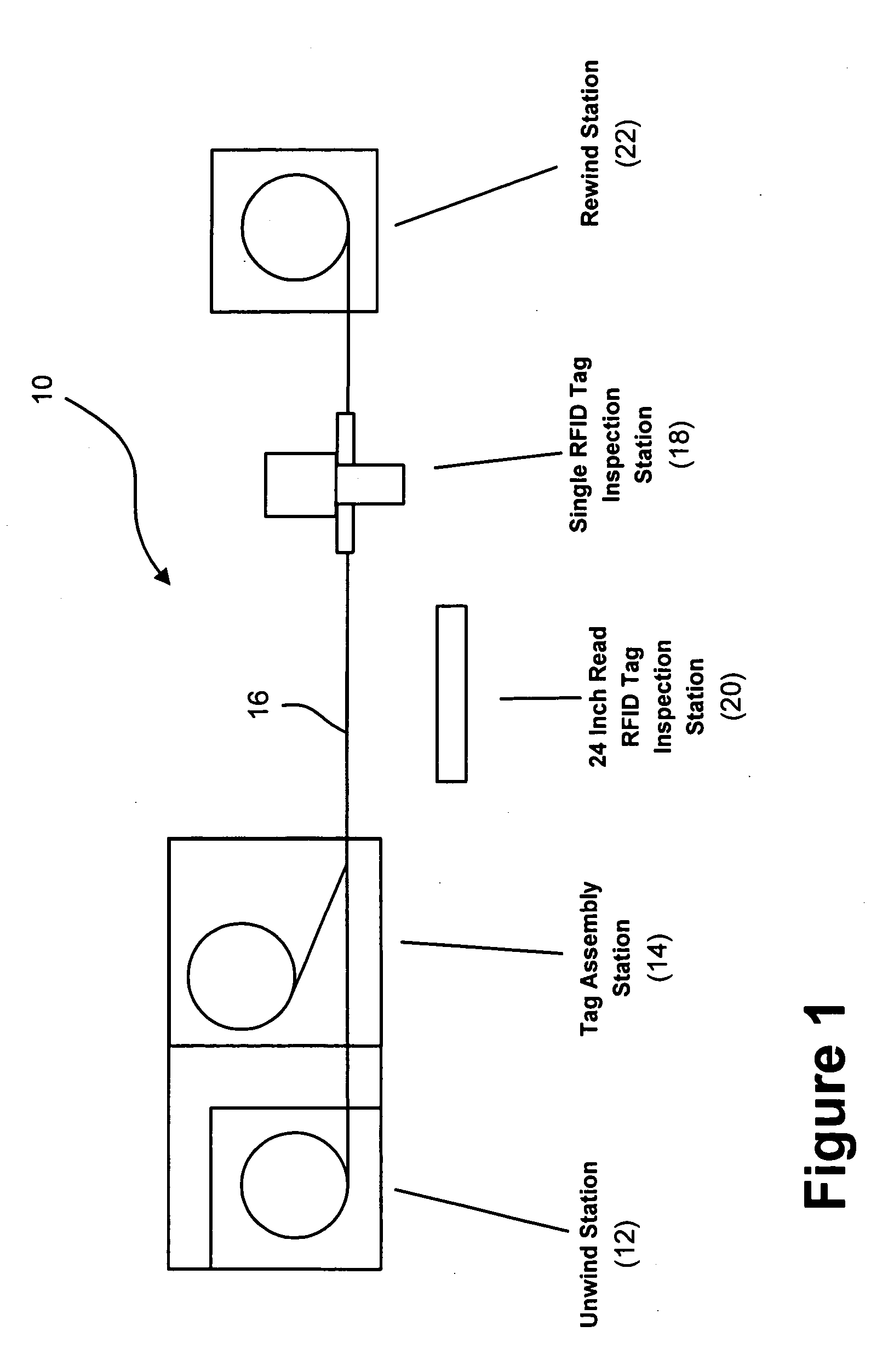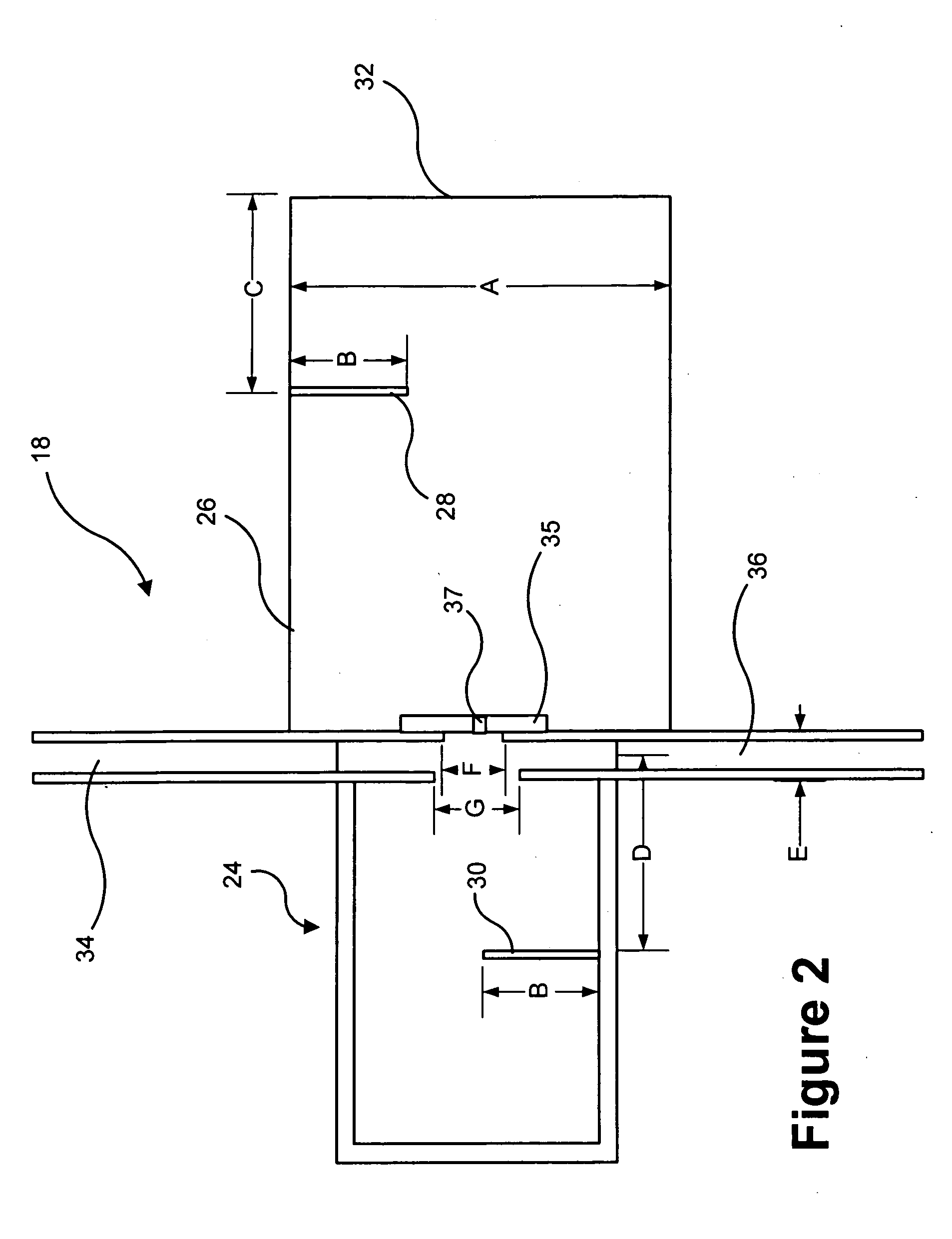System and method for validating radio frequency identification tags
a radio frequency identification and validation system technology, applied in the field of radio frequency identification tags, can solve the problems of inability to discriminate between labels with a long read range, inability to guarantee the readability of all tag inlays that they ship, and no known commercially available system
- Summary
- Abstract
- Description
- Claims
- Application Information
AI Technical Summary
Benefits of technology
Problems solved by technology
Method used
Image
Examples
Embodiment Construction
[0034] As discussed in more detail above, existing systems for reading RFID tags are optimized to read many tags at the same time. These RFID tags have typical rates of failure to read of about 20%. Existing systems do not permit the verification of a single tag, activating the single RFID tag and no others. As an example, the ultra high frequency 900 MHz tags use a spread of frequencies from about 902 MHz through about 928 MHz. The RFID reader produces a transmitted pulse of sufficient power to energize and activate any illuminated RFID tags. The RFID reader then goes into a receive state to receive any transmissions from the activated RFID tags.
[0035] However, a problem exists in that adjacent tags on the strip can be energized and activated, making it difficult to know exactly which particular tag of a group of tags is responding. The present invention allows the speedy and automated verification of individual tags when it is not known beforehand that the tag is operational. The...
PUM
| Property | Measurement | Unit |
|---|---|---|
| distance | aaaaa | aaaaa |
| frequencies | aaaaa | aaaaa |
| frequency | aaaaa | aaaaa |
Abstract
Description
Claims
Application Information
 Login to View More
Login to View More - R&D
- Intellectual Property
- Life Sciences
- Materials
- Tech Scout
- Unparalleled Data Quality
- Higher Quality Content
- 60% Fewer Hallucinations
Browse by: Latest US Patents, China's latest patents, Technical Efficacy Thesaurus, Application Domain, Technology Topic, Popular Technical Reports.
© 2025 PatSnap. All rights reserved.Legal|Privacy policy|Modern Slavery Act Transparency Statement|Sitemap|About US| Contact US: help@patsnap.com



